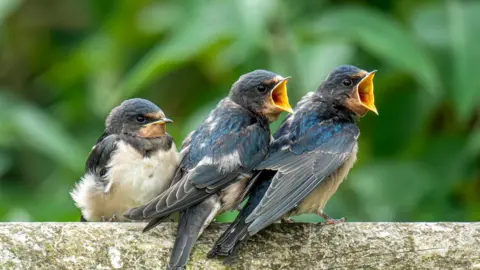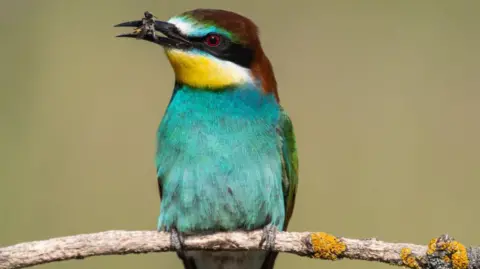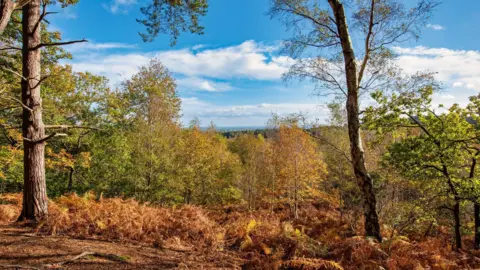Helen Briggs
Environment correspondent, BBC News•@hbriggs

 Getty Images
Getty Images
The swallow is a common summer visitor, arriving in April and leaving in October
With what's being called a mini-heatwave looming for the UK, it's not just humans looking forward to warmer weather.
The warm spell is expected to give a temporary boost to nature as migratory birds arrive from afar and butterflies stretch their wings.
The British Trust for Ornithology (BTO) says a succession of milder winters and wetter springs are all contributing to change in the natural world.
But a brief warm spell won't make much difference overall, and could be a bonus for nature lovers.

 Getty Images
Getty Images
Bee-eaters are a species found commonly in the southern Mediterranean and northern Africa
"On the plus side, better weather is more inviting for us to get out and enjoy the spring. Dawn chorus is at its peak at the minute and calm, warm mornings are perfect for enjoying it! " says Jon Carter of the BTO.
The Met Office says a brief spell of warmth at the end of April isn't a bad thing for wildlife - and there shouldn't be much impact on water sources such as ponds.
"Climate change is already having a big impact on our wildlife, but a temporary blip like this is an end of April dividend for wildlife," says the Met Office's Grahame Madge.
The warmer weather will accentuate the joys of seeing wildlife, such as butterflies and birds, he adds.
The peacock and short tortoiseshell are among the first to spread their wings, with more butterflies emerging from April onwards.
Dragonflies start to be seen around this time, too.
Summer visitors, such as swallows and swifts, can expect to find a plentiful food supply, with insects on the wing.
There could also be some sightings of rare visitors such as the exotic European bee-eater, which have recently begun nesting in the UK.

 Getty Images
Getty Images
Sheltered gardens on sunny days are a good place to see butterflies, like this peacock, in spring
Wildlife charities say it's a great time to get out and about and enjoy nature, but people should be on their guard against accidentally starting a fire.
Oliver Fry of Surrey Wildlife Trust says conditions are incredibly dry on the heathlands of Surrey, which creates "tinderbox conditions".
The wild, flat landscapes dotted with gorse and heather are known for their wildlife, including rare species like the sand lizard, woodlark and silver-studded blue butterfly.
Earlier this month conservationists warned that some of the UK's rarest wildlife is being "torched alive" and pushed closer to extinction after weeks of intense grass fires.
Anne McCall, director of RSPB Scotland, says climate change is driving more regular wildfires of greater intensity, and especially so in spring.
"It is not just vegetation that gets destroyed by wildfire," she says. "This is a critical time of year for our native wildlife – with birds nesting and other animals such as amphibians and reptiles coming out of winter dormancy and starting to breed."

 Getty Images
Getty Images
Lowland heathland is an open landscape covered in heathers, gorse and tree scrub, which is particularly vulnerable to wild fires
On the coasts, conservation experts say there has been a crop of sightings of whales and dolphins close to British shores – and though it's difficult to pin down a reason, warming seas and climate change are likely to be a factor.
"Seeing whales and dolphins in the wild is always an awesome experience but seeing more of them, and more unusual species around UK coast may not be such a good thing," says Danny Groves from the charity Whale and Dolphin Conservation.
Heatwaves and increases in sea temperatures can cause some whales to roam far from their usual areas just to survive, he adds.
Follow Helen on X and on Bluesky.

 3 weeks ago
40
3 weeks ago
40

















































